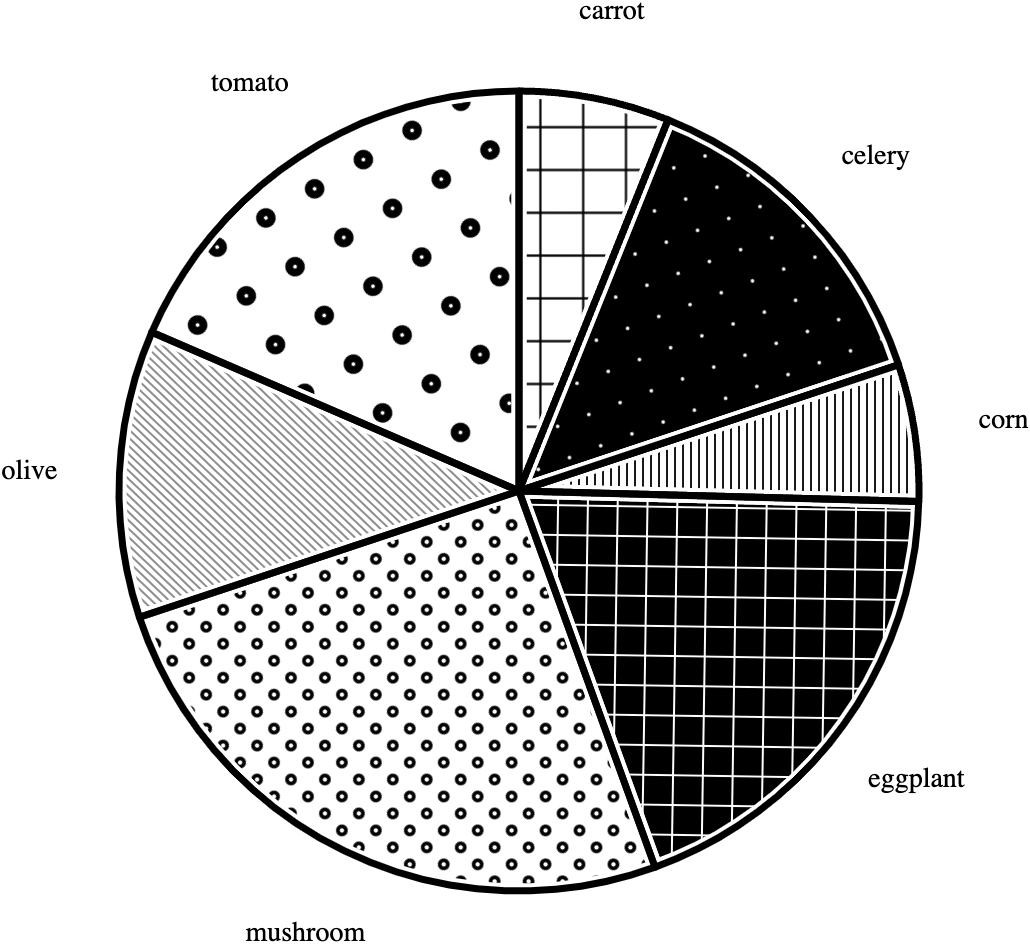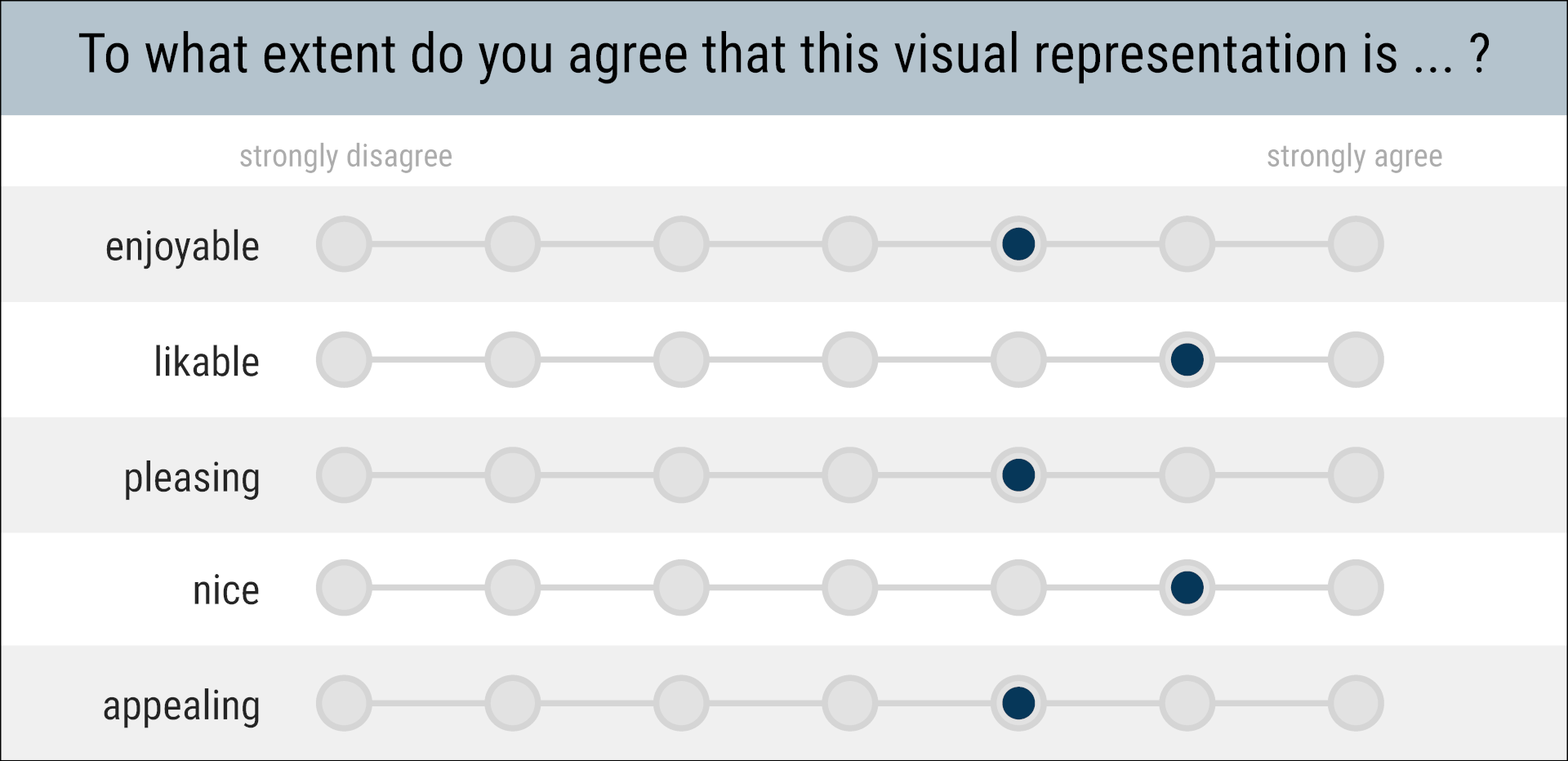BeauVis: A validated scale for measuring aesthetic pleasure of visual representations


The BeauVis Scale is a quick and reliable tool specifically crafted to measure the aesthetic pleasure of visualizations. It is a 5-item questionnaire and uses a 7-point Likert scale to gauge user responses.
Why choose BeauVis Scale?
- Easy to Administer: Quick and straightforward, this scale takes little time to complete.
- Reliable & Valid: Developed and validated through scientific methods, the BeauVis Scale reliably and validly measures aesthetic pleasure of visualizations.
- Designed for Visualizations: This scale is targeted specifically at evaluating visualizations.
What are the ideal use cases?
Use the BeauVis Scale to compare the aesthetic pleasure (or beauty) of multiple visualizations. It’s perfect for assessing various design options or gauging the effectiveness of design optimizations.
How to use the BeauVis Scale?
1) When to administer it?
Before the Experiment: We recommend administering the BeauVis Scale at the start of an empirical study to capture participants’ first impressions. This aligns with our own validation process, where participants rated visualizations without any prior interaction or exposure to the underlying data.
After the Experiment: Using the BeauVis Scale post-experiment is also a viable option and aligns with common practice. If you choose this approach, remember that results should be interpreted considering the participants’ usage experiences and the exposure to the data.
2) How to interpret its scores?
Calculate the average of the five individual item scores to obtain a single BeauVis score for each participant’s evaluation of a particular visualization. Keep in mind that this score is best used for comparing different visualizations and is not an absolute measure of aesthetic quality.
3) Can it be used independently?
Absolutely! The BeauVis Scale can function as a standalone tool for quickly comparing the aesthetic appeal of various visualizations. For a more comprehensive understanding of aesthetics, consider combining BeauVis scores with qualitative methods like interviews.
Reference
How was the BeauVis Scale developed and validated? See this paper:

Pictures
The images in the paper are available under a  CC-BY 4.0 license, see the license statement at the end of the paper.
CC-BY 4.0 license, see the license statement at the end of the paper.
Collaborators
This work was done at the AVIZ team of Inria, France, in collaboration with the Interactive Media Lab of TU Dresden, Germany.